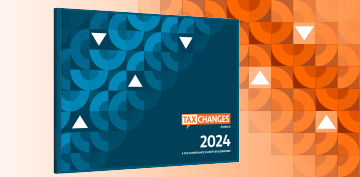Canadian sales tax for U.S. sellers
Ecommerce sales in Canada continue to rise and should hit nearly $60 billion (CDN) in 2018, according to an estimate by eMarketer. That said, there’s still plenty of room for additional growth, particularly for U.S. sellers.
Consider these facts from a recent piece in The Globe and Mail, one of the country’s leading newspapers:
- Approximately half of Canadian small businesses do not sell through their websites.
- More than a third of online spending from Canadians goes to sellers in other countries.
Both of those could mean big opportunities for your Amazon business.
But before you start selling in Canada, you’ve got to confirm that your account is a North America Unified Account (NAUA), which allows you to create and manage product offers in the U.S., Canada, and Mexico. Newer seller accounts on Amazon.com should be automatically enabled, but if your account is older, check to make sure. If you want to utilize Fulfillment by Amazon (FBA) in Canada, you’ll have to use a fulfillment center there, too. And no matter how you sell, you need to register for a Canadian Business Number.
We won’t go into all the details about setup here — to learn more, check out the Amazon Global Selling guide.
What we can go into detail about is sales tax. And even though Canada’s system isn’t quite as complex as the sales tax system in the U.S., that doesn’t mean it’s simple.
Sales taxes
Canada has only national and provincial sales taxes, so you don’t have to worry about different rates in smaller jurisdictions like you do in the U.S. In Canada, there are three different types of taxes:
- Goods and Services Tax (GST). This is the national sales tax. It’s 5 percent across the country.
- Provincial Sales Tax (PST). Some provinces and territories add a tax on top of the GST and require businesses to register and remit the PST separately for the specific province. Currently, PST (or QST in Quebec) ranges from 6 to 10 percent.
- Harmonized Sales Tax (HST). Other provinces and territories have an HST, which is a combination of a PST and the GST that allows businesses to remit the entire amount to the Canada Revenue Agency instead of dealing with the separate provinces. HST can be up to 15 percent.
Nexus and the small-seller exception
By comparison, it’s a lot easier to figure out where you need to collect sales tax in Canada: If you’re required to collect and remit in one province, you’re required to collect in all of them. But you might qualify for the small-supplier exception: If you have shipped less than $30,000 of orders into Canada over the previous four quarters, you don’t have to collect GST or HST. (Keep in mind that this is a “rolling” period, not a calendar year.)
One important note: Some provinces require provincial sales tax to be collected no matter what — even by small sellers. To avoid this, you could simply refuse to take orders from those provinces.
And just like in the U.S., some goods and services are exempt from Canadian sales tax entirely; they’re called “zero-rated” items. You can see the list of zero-rated goods here.
Sales tax might seem a little easier in Canada, but remember, there are a lot of other things to consider when selling there, such as customs and labeling requirements. And those apply whether you use FBA or fulfill orders on your own.
For more details on the various rates, rules, and regulations, check out the Canada Revenue Agency website.
Good news: You don’t have to do it all yourself
At Avalara, we can make it easier to calculate your taxes and file returns for taxes in any province in Canada. Visit our Help Center page on Canadian taxes, or call us at 877-759-6520.

Avalara Tax Changes 2024: Get your copy now
Stay ahead of 2024’s biggest tax changes with this comprehensive, compelling report covering seven industries.
Stay up to date
Sign up for our free newsletter and stay up to date with the latest tax news.





